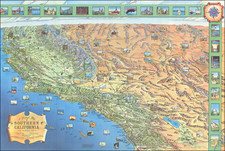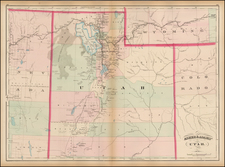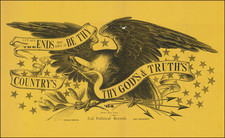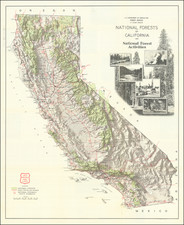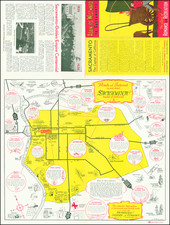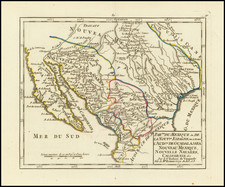Rare lithographic map of the Comstock Lode measuring 31 by 26 inches, with individual mining claims outlined in hand color.
While this rare map was normally issued in a folding case as a pocket map, this copy was mounted on canvas and affixed to rollers (no longer present) at an early date.
The Comstock Lode, discovered in the late 1850s in the area that is now Virginia City, Nevada, produced prodigious quantities of silver and gold. While located in the dry, desert area of the Eastern Sierras, vast reservoirs of underground water regularly flooded the mines. Adolf Sutro conceived a long drainage tunnel that would run nearly 2,000 feet below the surface. The 16-foot tunnel was completed a few years after this map was published, about the time the Lode reached peak production. Across the top of the map is an inset titled "Longitudinal Section of the Comstock Lode," which depicts the depths of claims and the route of the Sutro Tunnel.
Scarce. OCLC records two copies of this edition (Yale, Huntington Library) and one dated a year earlier (Stanford) and we have seen and example published in 1875. A previous owner has penned a presentation to a museum in the upper left margin (outside the map border) and there is a subsequent discreet withdrawn stamp nearby.
Grafton Tyler Brown, perhaps the first African American artist to depict California and the Pacific Coast, was born in Harrisburg, Pennsylvania, February 22, 1841. Before he was twenty, Brown moved to San Francisco and learned the art of lithography from C. C. Kuchel. In 1861 and again in 1864, Brown created the two earliest bird's eye views of Virginia City. At the age of twenty-six, he established his own firm, G.T. Brown & Co.
At San Francisco, and elsewhere in California, Brown produced skillfully illustrated bank notes, labels, and maps, and stock certificates for Wells Fargo, Levi Strauss and Co., and several mining companies. His significant lithographic production, The Illustrated History of San Mateo County (1878), featured seventy-two views of the county's communities and ranches. Brown traveled throughout Oregon, Washington, Idaho, Wyoming, Nevada, and British Columbia (where he settled in 1882), producing maps and illustrations, including many landscape paintings.
In 1893, Brown secured employment as a draftsman at the St. Paul, Minnesota office of the U.S. Army Corps of Engineers. Sometime during his St. Paul years he married Elberta Brown. Brown's work with the Corps of Engineers ended in December 1897, after which he worked in the civil engineering department of the city of St. Paul until 1910. He died on March 3, 1918, in Nicollet County, Minnesota, bringing to a close a rich and varied career as an artist and illustrator of the American West.









